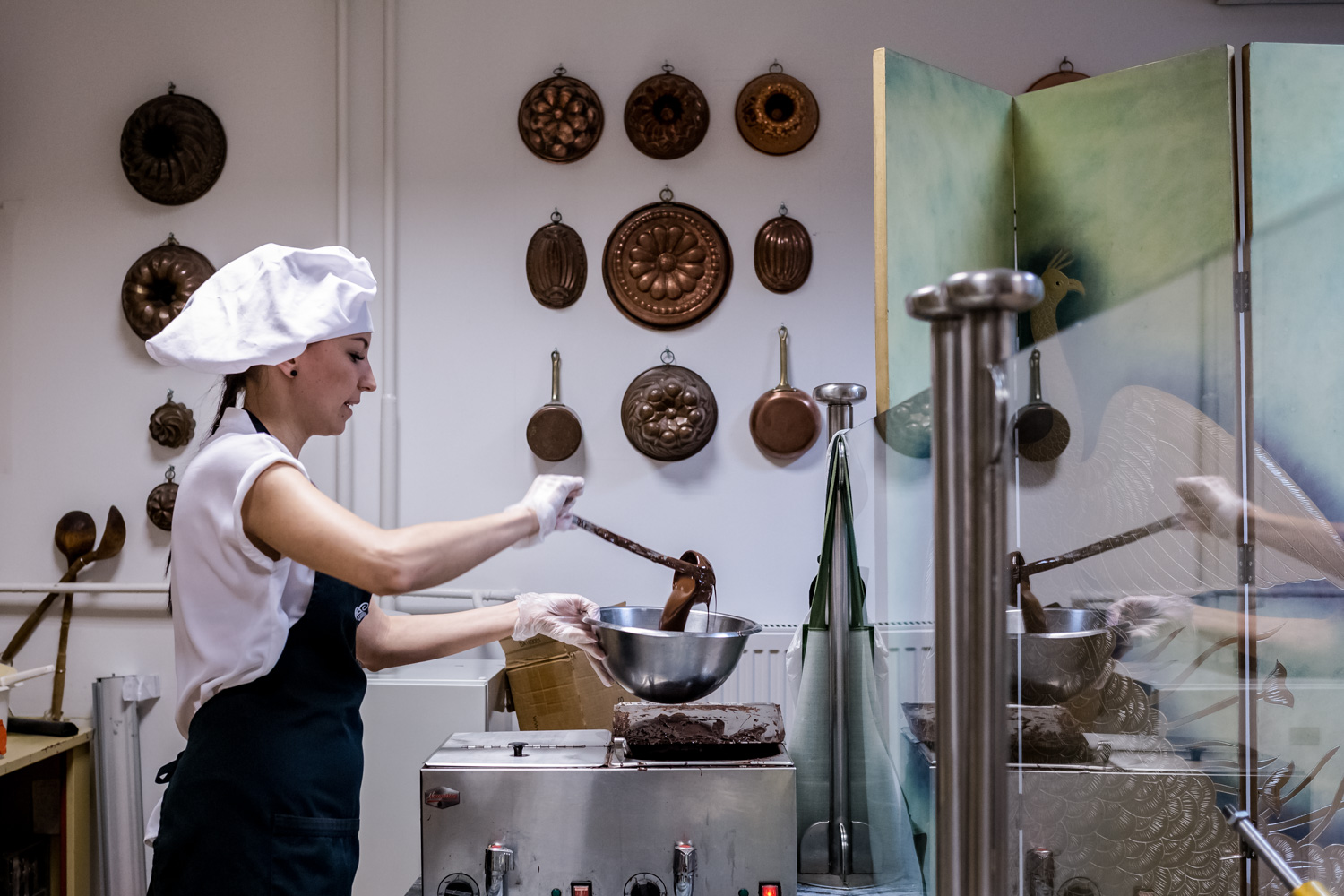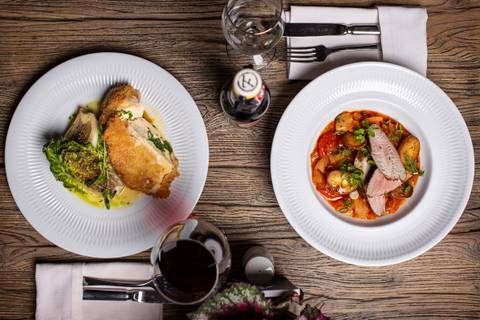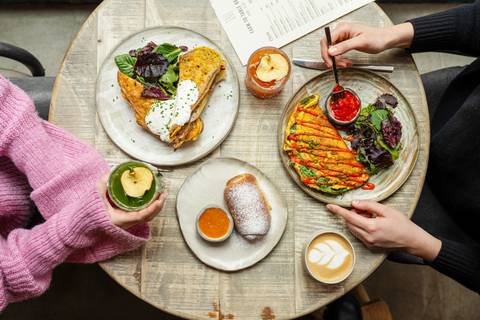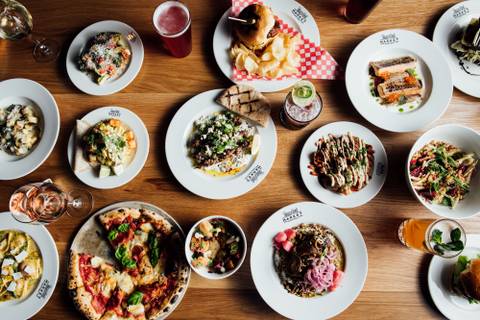It’s hard to look at relics of cocoa cultivation, chocolate production, and chocolate consumption while our stomachs are growling. An iconic manufacturer of Hungarian sweets – the Szamos Family – decided to have mercy on its visitors, and now offers a guided tour with tastings at the Chocolate Museum within their Kossuth Square site. Although we wouldn’t compare the experience to a visit in Willy Wonka’s Chocolate Factory, we still satisfied our sweet tooth and our curiosity about how bonbons come to life.
Everything started with a marzipan rose – according to the notes of Iván Bächer. Mladen Szavits, later called Mátyás Szamos, was a poor Serbian boy from Szentendre, who first made small roses out of sweet almond paste as a Danish confectioner’s apprentice. He mastered the profession at Auguszt, then at Gerbeaud Confectionery, and soon his experiments grew into his own enterprise that dealt with more than just marzipan. The business from Pilisvörösvár remained in the family, and is now in the hands of the third generation.
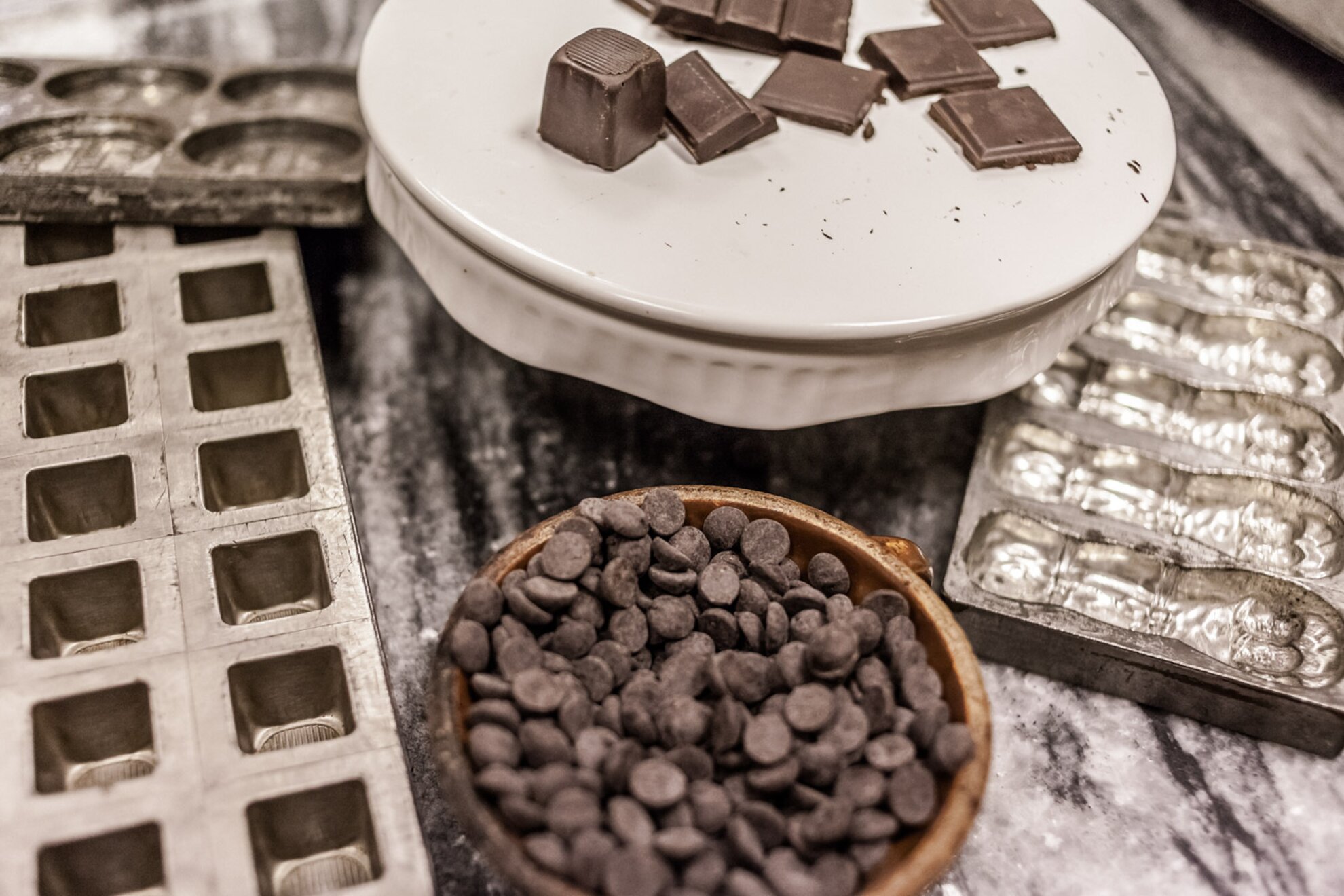
Szamos Today, a versatile coffeehouse from the same brand, opened at Kossuth Square just last year with its Chocolate Museum on the first floor, exhibiting the family’s imposing collection of chocolate-related items. Gabriella Szamos and her husband Gyula Kelényi has been adding to the collection for more than 30 years until their garage was finally full. During a recent tour, Gabriella told us that “Whenever my 96-year-old mother had a guest, she whispered to them, ‘you couldn’t imagine what the garage looks like. It’s impossible to go inside!’”
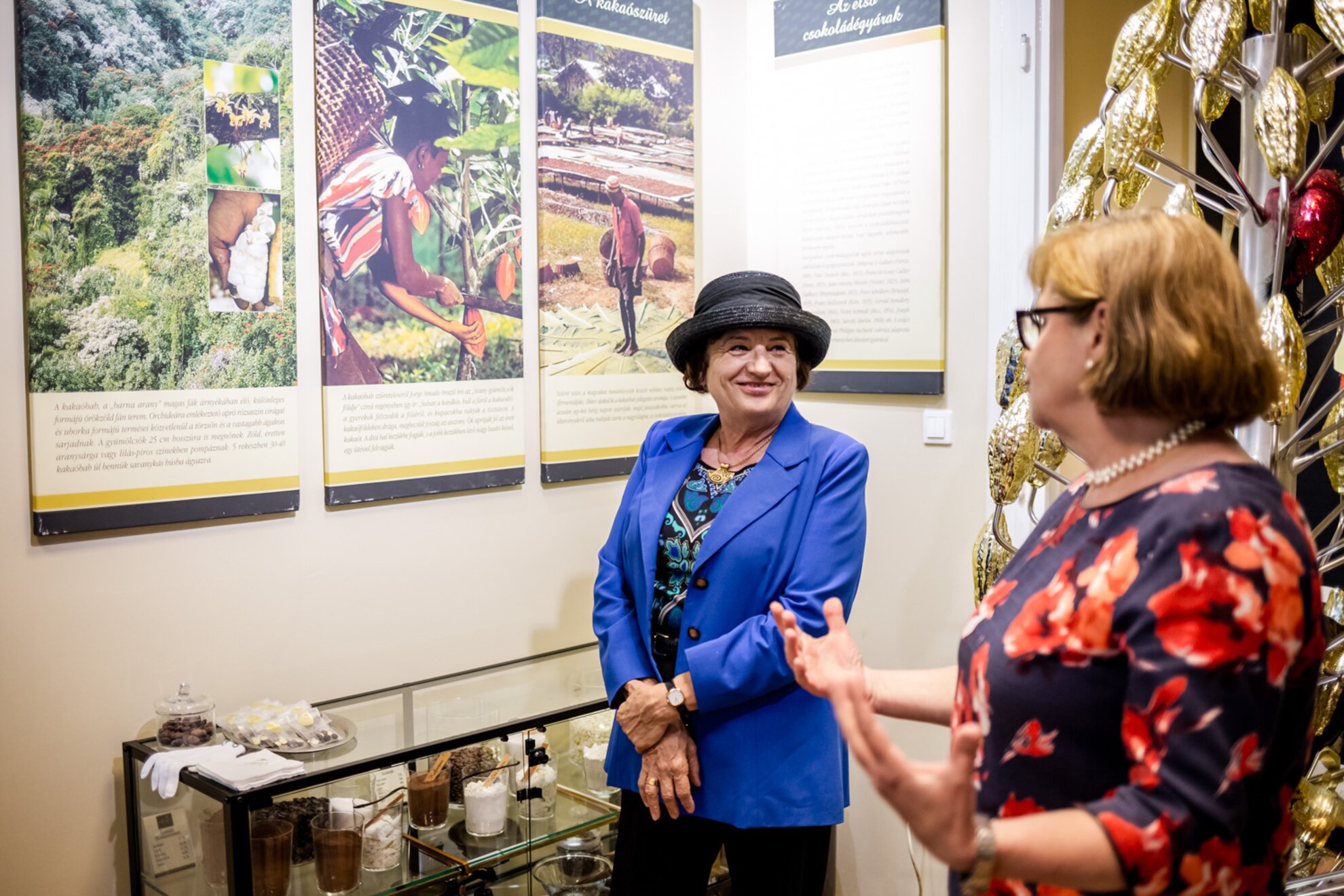
The exhibition was compiled by Anikó S. Nagy, the former deputy director of the Hungarian Museum of Trade and Tourism, and a cocoa expert. The guided tour takes us through six rooms, each dealing with different stages of the chocolate-making process, from cocoa production to chocolate molding. Each stage has a tasting opportunity in connection with the subject of the surrounding display. At the first station, where we learn about cocoa cultivation and how the flowers of the cocoa tree are pollinated by hand near the equator, we can taste raw cocoa beans. Nearby, the Biedermeier-style “Sweet Salon” recalls the chocolate habits of the 18th and 19th centuries with beautiful chocolate pots, cups, porcelain, and the luxury of hot chocolate, which we can enjoy, as well – with a small piece of marzipan on a toothpick.

The Szamos factory imports its chocolate from Belgium in 25-kilogram packages, and we could taste the pastilles that serve as raw ingredients, too. In a small screening room, a video is shown that guides the watcher to growing lands and into a Belgian factory, where we can follow the chocolate-making process from cocoa bean to bonbon.
We can taste a new product of Szamos, the Gyöngypraliné (“Pearl praline” in English), filled with orange, cherry, vanilla caramel, and sweet-salty almond nougat creams, in the room furnished according to the 19th- and 20th-century fashion. In the last room, the chocolate workshop, we can not only view original, functioning machines like a milk separator and chocolate mixer, but also make our own bar of this sweet treat. The chocolate was mixed for us by one of the factory’s employees, Adél, and then cooled on a cold marble table. Each visitor can customize their own fresh chocolate bar with toppings like nuts, chili, cinnamon, or raisins.

The museum exhibits exceptional relics of chocolate’s history: plenty of molds, coffee and chocolate sets, promotional items, a chocolate-box gallery with metal boxes decorated with artistic paintings, and an 80-kilogram marzipan sculpture replica of one of the most prominent paintings of Swiss artist Jean-Étienne Liotard, “The Chocolate Girl”.
